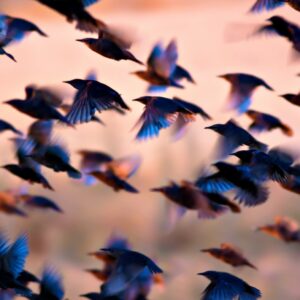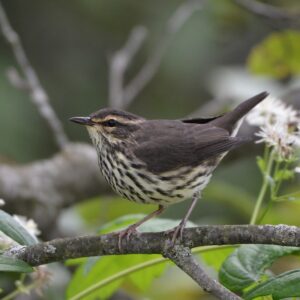Getting out to the IBA at the Albany River mouth
Betwixt and between meetings, Peter Rosenbluth and I were able find a guide to take us out to the coast of James Bay where so many birds congregate on their ways north in the spring and south in the mid to late summer and fall. Upon leaving Fort Albany, we encountered Gray Seals playing hide-and-seek with us in the brackish waters, still several kilometres from James Bay. On our 40 minute trip in the characteristic sleek wooden-hull boats used by the Cree to navigate the rivers and the bay, we encountered many Common Goldeneyes, a few Common Mergansers, some Black Scoters, white-winged Scoters, Red-tailed Hawks and Bald Eagles. Spray jumped the gunwales, hitting us on the face and getting our legs wet as the water was increasingly agitated as we moved further out the delta into the expansive James Bay where no longer we were sheltered from the cold wind. The mouth of the delta of the Albany is a myriad of islands with vast tidal flats and wetlands. It is a critical stop-over for several species of shorebird and waterfowl. Our guide explained how the vegetation along the coast is changing though – moving out into the the Bay each successive year.
We came ashore on a beach of mud flats and sand. Tidal flats stretched out dozens of metres from the high-tide mark, as the tide withdrew, leaving pools of water amongst the gravel, glacial erratics, mud and sand. There is a slight rise in the land separating the tidal zone from vast salt marshes of rushes, sedges, and horsetail beds. While walking the shore, a flock of 20 juvenile Hudsonian Godwits flew directly over my head, landing just down the beach. The adult Godwits congregate in huge numbers in the IBA in late July and August, laying on layers of body fat to fuel their flights to Southern Brazil, Argentina and Chile. In September, the young of the year come along, also building up in number before their more lazy departure which lasts into October. As many as 10,000 Hudsonian Godwits, about 20 percent of the global population, use this site as an important stop over. In the spring, some even stay around to nest, according to local residents. We also observed Dunlin, Snipe, Greater Yellowlegs, and Black-bellied Plover, but only in small numbers. The most common and widespread birds at this time of the year are Horned Larks and Lapland Longspurs. They are everywhere along the shore, feeding on something, and constantly moving and being stirred up by us, a blowing leaf, or simply their irrepressible urge to move.
The IBA is truly a sight to behold, but also was our guide. A traditional hunter/gatherer, he knew all of the species, (not just birds) was able to identify them without binoculars both by sight and the soft sounds they uttered. He is one of many hunter gatherers in the Cree communities like Fort Albany and Kashechewan who know the land, river and coast better that anyone. It was a great privelege to visit the coast with him.
On our return, we observed more seals, a Peregrine Falcon, and a few Rough-legged Hawks along with one of the species that the coastal Cree communities depend upon and drives their annual spring hunt, the Canada Goose.



